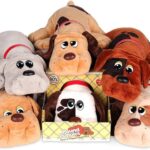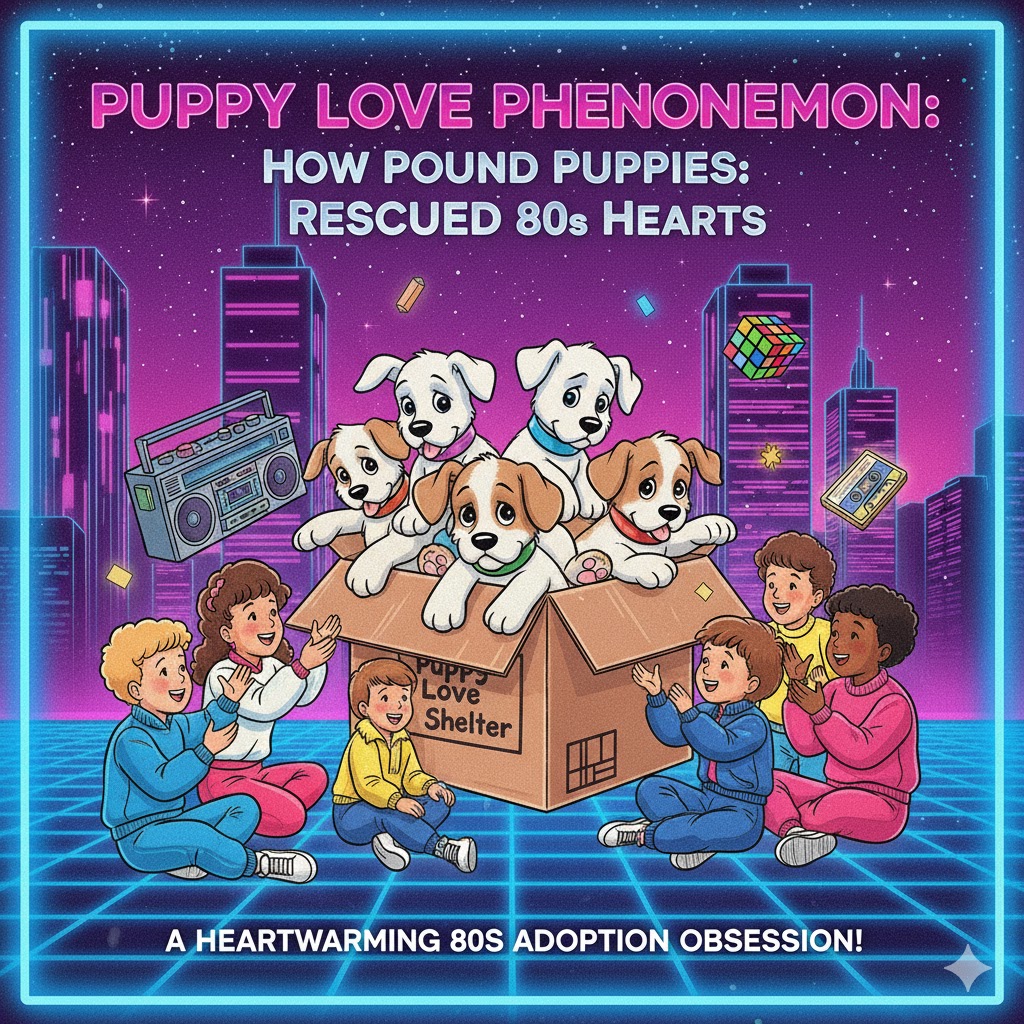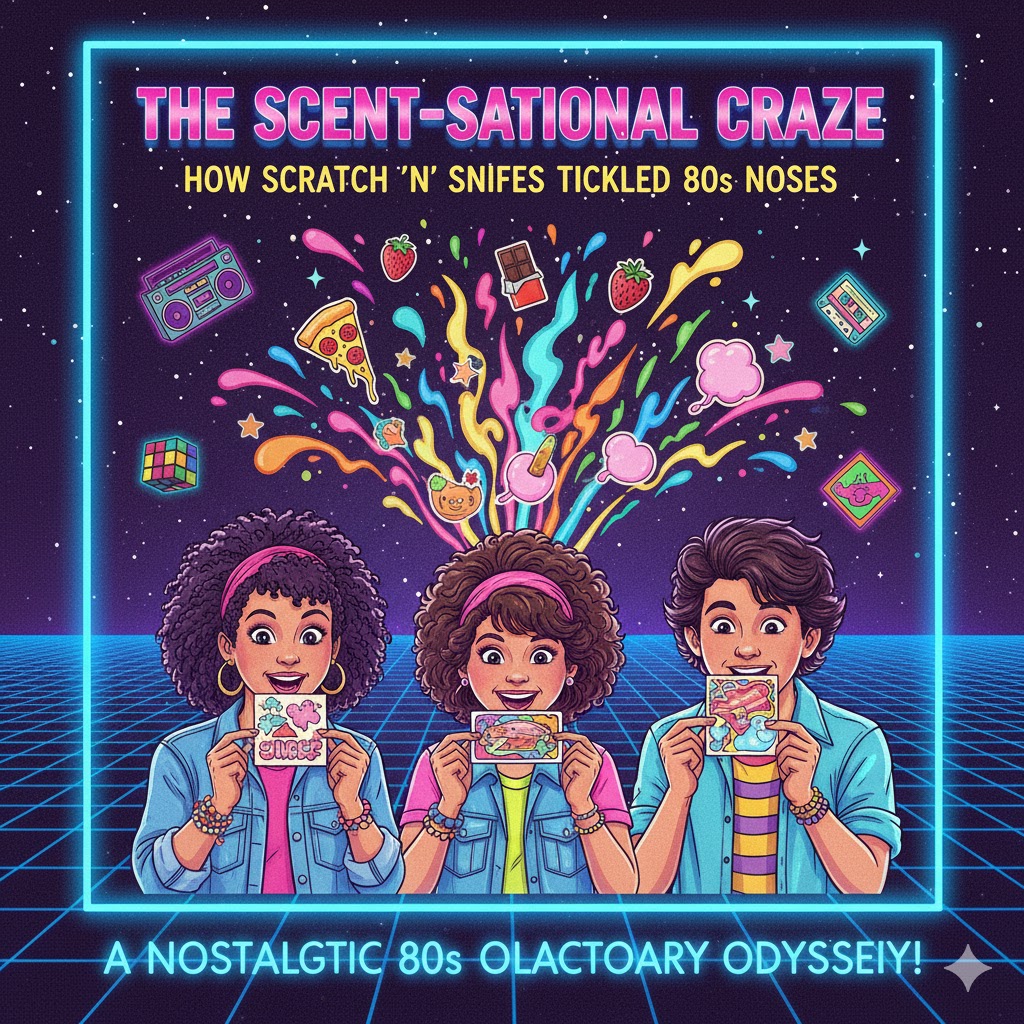 The 1980s were a golden era for toy culture, a decade where imagination, consumerism, and pop culture converged in ways that defined childhood for an entire generation. Among the wave of dolls, action figures, and interactive playsets, one toy line captured hearts through its combination of cuteness, collectibility, and heartwarming storytelling: Pound Puppies. These plush dogs, each with their own unique personalities and backstory, became a phenomenon that transcended the toy aisle, inspiring animated television specials, comic books, and a lasting cultural imprint. Pound Puppies were more than stuffed animals—they were a symbol of compassion, friendship, and the imaginative play that defined 1980s childhood.
The 1980s were a golden era for toy culture, a decade where imagination, consumerism, and pop culture converged in ways that defined childhood for an entire generation. Among the wave of dolls, action figures, and interactive playsets, one toy line captured hearts through its combination of cuteness, collectibility, and heartwarming storytelling: Pound Puppies. These plush dogs, each with their own unique personalities and backstory, became a phenomenon that transcended the toy aisle, inspiring animated television specials, comic books, and a lasting cultural imprint. Pound Puppies were more than stuffed animals—they were a symbol of compassion, friendship, and the imaginative play that defined 1980s childhood.
Pound Puppies first appeared in 1984, created by Tonka to capitalize on the burgeoning demand for collectible, character-driven toys. The concept was simple yet compelling: each stuffed dog came with a collar and identification tag, ready to be adopted by children who wanted to “rescue” and care for them. The narrative of adoption and compassion struck a chord with kids, who were already immersed in stories of loyalty, friendship, and imaginative play. Each puppy came with a unique look, personality, and backstory, encouraging children to create their own adventures while instilling a subtle message about empathy and responsibility.
The cultural impact of Pound Puppies extended well beyond the toys themselves. The line inspired a series of animated television specials, which were later expanded into a full Saturday morning cartoon series. The shows brought the stuffed animals to life, portraying them as heroic, clever, and endlessly loyal companions who worked together to find loving homes. This blend of narrative storytelling and interactive play blurred the lines between media and merchandise, a trend that would come to define much of 1980s toy marketing. Through these animated adventures, Pound Puppies became not only beloved toys but also characters with personality, backstory, and an emotional connection to their audience.
The accessibility and affordability of Pound Puppies contributed to their widespread popularity. Unlike high-priced toys or elaborate playsets, the plush dogs were reasonably priced, making them attainable for a wide range of families. This inclusivity ensured that nearly every child could participate in the craze, fostering social bonds as kids compared their collections, traded puppies, or acted out stories inspired by the television series. The concept of collectibility, paired with the emotional appeal of adoption, created a unique cultural phenomenon that resonated across socioeconomic lines, making Pound Puppies a unifying trend in 1980s childhood.
Marketing played a pivotal role in cementing Pound Puppies as a pop culture staple. Television commercials were designed to tug at the heartstrings, often depicting lonely puppies in shelters waiting to be adopted. These ads emphasized the emotional rewards of giving a Pound Puppy a home, appealing both to children and to parents who wanted to encourage empathy and caring. The commercials were memorable for their storytelling approach, setting Pound Puppies apart from more action-oriented toy lines. By combining cuteness with a narrative of compassion, the marketing strategy elevated the toys from mere objects to culturally meaningful symbols of friendship and care.
Pound Puppies’ influence also extended into fashion and merchandising. The toys inspired related products such as lunchboxes, clothing, bedding, and backpacks, creating a branded ecosystem that allowed children to surround themselves with their favorite characters. These tie-ins reinforced the toys’ presence in daily life, making them not just toys but cultural touchstones. The merchandise extended the emotional and imaginative engagement, allowing children to carry the essence of Pound Puppies into multiple aspects of their lives, from playtime to school and beyond.
The narrative depth of Pound Puppies contributed to their cultural resonance. Each dog was crafted with a distinctive personality, quirks, and style, giving children the ability to engage in storytelling and roleplay. Kids could create adventures where the puppies embarked on rescues, solved problems, or interacted with other characters, fostering creativity and narrative thinking. This emphasis on character-driven play distinguished Pound Puppies from simpler, static toys and encouraged imaginative, collaborative play among peers. Children were not just playing with plush animals; they were creating stories, negotiating roles, and engaging in social learning that mirrored real-world interactions.
Television played a crucial role in shaping the cultural identity of Pound Puppies. The 1980s saw the rise of Saturday morning cartoons as a major cultural force, and the animated adventures of Pound Puppies fit seamlessly into this ecosystem. Shows emphasized teamwork, problem-solving, and moral lessons, making them appealing to parents and entertaining for children. The combination of narrative depth, humor, and heartwarming storytelling reinforced the emotional connection children felt toward the toys. By bringing the plush puppies to life on screen, the franchise strengthened brand loyalty, ensuring that the toys remained culturally relevant throughout the decade.
Pound Puppies also contributed to a broader conversation about empathy and social responsibility. While marketed as toys, they subtly encouraged children to consider the needs of others, reflect on compassion, and imagine themselves as caretakers. The adoption narrative created a microcosm for understanding relationships, obligations, and the emotional satisfaction derived from helping others. This moral dimension, packaged within an accessible and entertaining toy line, set Pound Puppies apart from more action-oriented, competitive toys of the era, offering a gentler, values-driven alternative that resonated with both children and parents.
The collectibility of Pound Puppies fueled social interaction and community among children. Trading, comparing, and completing collections became an integral part of play, creating shared experiences and rituals that extended beyond individual households. Rare or limited-edition puppies generated excitement and encouraged peer-to-peer engagement, turning the toys into social currency. This aspect of play reinforced collaborative skills, negotiation, and strategic thinking while simultaneously cultivating enthusiasm for a shared cultural phenomenon. The sense of belonging that came with participating in the Pound Puppies craze strengthened their cultural impact, embedding them in the social fabric of 1980s youth.
Fashion, music, and broader 1980s aesthetics also influenced the design and appeal of Pound Puppies. Some puppies featured vibrant colors, playful accessories, and patterns that echoed the neon, bold style of the decade. These design choices made the toys visually appealing and culturally resonant, aligning them with other contemporary trends in clothing, media, and lifestyle. The fusion of appealing design, character-driven narratives, and emotionally engaging marketing created a multi-dimensional cultural presence that ensured Pound Puppies were more than just toys—they were symbols of 1980s childhood identity.
Pound Puppies’ enduring appeal also lay in their adaptability. As the toy line expanded, new breeds, styles, and themed collections were introduced, keeping the product fresh and relevant. Special editions, holiday-themed puppies, and character-specific variations offered ongoing engagement, encouraging children to continue collecting and participating in the imaginative play ecosystem. This adaptability ensured that Pound Puppies remained culturally significant throughout the late 1980s and even into the 1990s, demonstrating the longevity of a well-crafted toy line that combined emotional resonance, creativity, and accessibility.
The franchise’s influence extended into media crossovers and merchandising synergy. Comic books, storybooks, and special editions provided additional avenues for children to engage with their favorite characters. These expansions reinforced the emotional and imaginative connection, offering children multiple ways to interact with the Pound Puppies universe. The integration of media, merchandise, and imaginative play exemplified the 1980s approach to branding and cultural saturation, where toys were more than objects—they were entry points into larger narrative and cultural experiences.
Pound Puppies also had a subtle but lasting impact on children’s understanding of pet ownership and animal care. While playing with plush toys, children learned about responsibility, empathy, and nurturing behaviors, often translating these lessons into real-world interactions with pets and peers. The toys offered a safe, engaging way to explore social and emotional skills, combining entertainment with personal development. This blend of fun and formative learning contributed to the toys’ enduring popularity and cultural significance, ensuring that they were remembered not just as playthings but as influential elements of childhood.
The success of Pound Puppies highlighted the potential for character-driven toys to create multi-generational appeal. Adults who grew up in the 1980s often remember the emotional connection they felt to their favorite puppies, while children of subsequent decades could discover the toys through re-releases, media reruns, or collector markets. This cross-generational resonance underscores the timelessness of a well-executed concept that combines emotional engagement, imaginative play, and relatable characters. Pound Puppies demonstrated that toys could be both commercially successful and culturally meaningful, influencing not only childhood experiences but also broader trends in media, marketing, and storytelling.
Ultimately, the significance of Pound Puppies in 1980s pop culture lies in their ability to blend emotion, imagination, and collectibility. They offered children more than just a plush companion—they provided a framework for storytelling, social interaction, and moral development. Their marketing, television presence, and merchandise reinforced a cohesive cultural identity, making Pound Puppies emblematic of the decade’s approach to toys, media, and childhood experiences. The combination of emotional resonance, narrative depth, and imaginative potential ensured that these little plush dogs would leave a lasting imprint on pop culture and on the hearts of children everywhere.
For those who grew up with Pound Puppies, the memories extend beyond the toys themselves. They evoke afternoons of imaginative adventures, the thrill of collecting rare editions, and the emotional satisfaction of adopting a “puppy” that became a loyal companion. These experiences reflect the broader cultural context of the 1980s, a decade in which toys were not merely objects but central components of social, emotional, and imaginative development. Pound Puppies were at the heart of this phenomenon, offering a model of play that combined accessibility, creativity, and emotional connection in a way few other toy lines could match.
The legacy of Pound Puppies endures because they captured the essence of childhood imagination, empathy, and creativity. Their cultural impact extended beyond the toy aisle into television, print media, and broader social consciousness, creating a phenomenon that was at once playful, meaningful, and memorable. They stand as a testament to the power of thoughtful design, compelling storytelling, and emotional resonance in shaping not only a successful toy line but a cultural icon.
Pound Puppies were more than plush toys—they were ambassadors of friendship, empathy, and creative play, embodying the spirit of 1980s childhood. They demonstrated that toys could be small yet impactful, fun yet formative, and playful yet emotionally significant. Through their accessible design, engaging narratives, and memorable marketing, Pound Puppies became a defining element of 1980s pop culture, leaving a lasting legacy that continues to resonate with fans and collectors alike.
The story of Pound Puppies exemplifies how simple ideas, executed with care and creativity, can shape cultural trends, influence behavior, and become symbols of an era. They are remembered not only for their adorable designs but for the imaginative worlds they inspired, the friendships they fostered, and the emotional lessons they imparted. As enduring icons of 1980s childhood, Pound Puppies remind us that sometimes, the smallest toys can leave the largest imprint on culture and memory.



